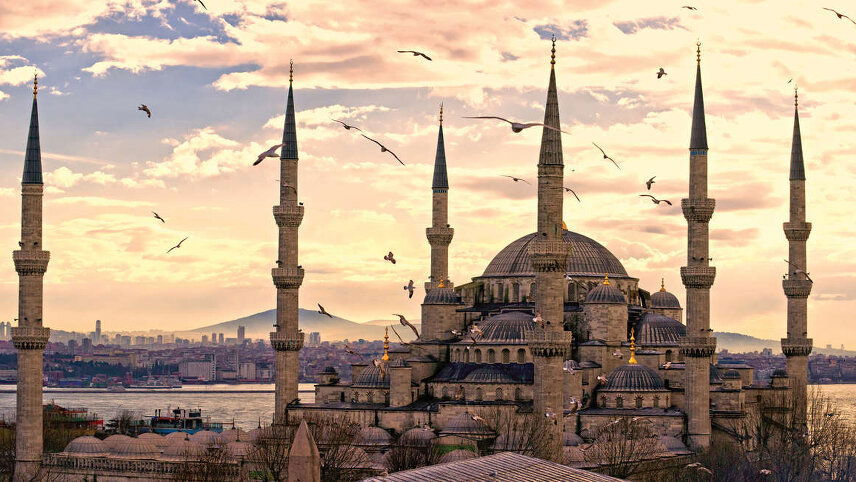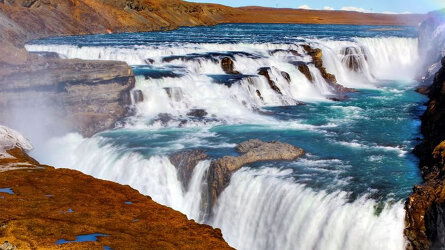Overview
Itinerary
Our tour of Turkey starts in Istanbul. Once known as Constantinople, the city has been the capital of both the Byzantine and Ottoman empires and today, its historic riches are evident at every turn. Straddling Europe and Asia, Istanbul was an important stop on the old Silk Road. This resulted in the city forming a patchwork of cultures that make up modern-day Istanbul - and the mouthwatering local cuisine. Turkish food is a hearty and healthy mix of Middle Eastern, Asian, and Balkan style dishes ranging from barbecued meat kebabs to vine leaf-wrapped vegetable rice parcels.
For those arriving in time, our tour leader will meet you in the hotel reception at 7pm for a welcome meeting, followed by dinner for those who want to join. There are no activities planned today, so you're free to arrive in Istanbul at any time. If you miss the welcome meeting, our tour leader will catch you up as soon as possible. Please note that if some passengers are arriving after the planned welcome time, then the main introductory briefing will be conducted on the morning of day 2 when everybody is present.
If you'd like an airport transfer, you'll need to arrive at Istanbul Airport (IST) (a 90-minute drive from the centre) or Sabiha Gokcen International Airport (SAW) (a two-hour drive from the centre). If you are arriving into Istanbul Airport (IST) and have an arrival transfer confirmed with us - once you have collected your luggage please proceed towards the airport exit. Your transfer driver will be waiting for you outside exit gate 14 with an Explore sign.
Our hotel is conveniently located within walking distance, or a short tram ride, from many of the Sultanahmet district's main sites. If your flight arrives earlier in the day, you might want to visit Istanbul's Grand Bazaar (closed on Sundays). Located within the walls of Istanbul, it's made up of over 60 streets and 3,000 shops selling everything from jewellery to carpets and furniture to local arts and crafts. The labyrinth of streets also houses two mosques, two hammams and plenty of cafes and restaurants, so there's plenty to explore. Stay: Monaco Hotel (Comfortable)
This morning we'll get our first taste of a traditional Turkish breakfast, which usually consists of yogurts, cheese, and breads along with cucumbers, tomatoes, olives and fruits.
We'll head out on foot towards the Sultanahmet Square. Also known as the Hippodrome of Constantinople, the square was used for chariot racing in the Roman era. Today it's much more sedate but houses iconic landmarks such as the Byzantine Hagia Sophia, the Serpentine Column, Obelisk of Theodosius and the Walled Obelisk. We'll have a guided tour of the square, ending with a visit to one of its most famous buildings, the Sultanahmet Blue Mosque. Continuing on foot, we visit Suleymaniye Mosque, an imperial mosque commissioned by Suleiman the Magnificent in the mid 1550s.
There are several lunch options around the Sultan Ahmet district, alternatively, it's a short walk or tram ride to the Spice Bazaar where there are plenty of traditional restaurants and cafes to try homecooked dishes.
This afternoon, we'll take the public ferry across the Bosphorus to Kadikoy. Taking around thirty minutes, the ferry offers great views of the city skyline from the waterway that separates the continent of Europe and Asia. The Asian side of Istanbul is full of lively cafes, bars, shops and galleries, it is less touristed and more residential and offers a view of another side to the city. After Exploring the neighbourhood on foot, we will return by ferry.
Depending on your interests and time available in Istanbul you may choose to join the leader on an exploration of Kadikoy or instead visit the Hagia Sophia, Galata Tower, Topkapi Palace Museum or Basilica Cistern. With so much to see in Istanbul you may choose to spend additional nights before or after the trip. Stay: Monaco Hotel (Comfortable) (B)
Leaving Istanbul after an early breakfast, this morning we'll make the five-hour drive to the Gallipoli Peninsula. It was at Gallipoli in 1916 that, after eight months of bloody hand-to-hand fighting and loss of life, the ill-fated Allied campaign was forced to concede victory to the Turks and withdraw. Whilst here we visit Anzac Cove - the infamous site of the Anzac landing, as well as the Lone Pine Australian Memorial and Cemetery and the war belongings exhibited in the sobering Kabatepe War Museum.
Later this afternoon, we'll board a 30-minute ferry ride to travel across the Dardanelles to Canakkale, where we'll spend the night. Off the main tourist trail, this lively port city is a great place to sample locally caught seafood and join locals taking an evening stroll along the seafront where you can see the Trojan Horse replica. Stay: Canak Hotel (Comfortable) (B)
Today we have a long day of travelling, so we'll depart early at around 7am. First, we'll drive the short distance to the ancient city of Troy where, according to legend, the artful Ulysses devised the wooden horse strategy, thereby ending the ten-year Trojan War. Here, nine ruined cities, one on top of the other, have been uncovered, going back some 5,000 years. Troy VI is the assumed walled city of King Priam (1800-1275 BC), celebrated by the blind Greek poet Homer in the Iliad and all but lost in legend until unearthed by amateur archaeologist Schliemann in 1871.
Boarding our bus again, we'll make the three-hour journey to the Greco-Roman remains at Pergamon. Pergamon gave its name to and was the source of 'parchment', for which it was famous throughout the Middle East. We'll visit the striking acropolis, impressively perched above the modern-day town of Bergama, which contains the remains of a library, a theatre, temples and altars. Later this afternoon, we'll drive to Selcuk, a further three hours away.
Today is one of our longest driving days and we'll travel for approximately seven hours. Stay: Cenka Hotel (Comfortable) (B/D)
This morning, we'll spend some time exploring Selcuk's historic neighbour, the great Greco-Roman city of Ephesus accompanied by a local guide. Visited by Mark Anthony and Cleopatra, and having inspired Saint Paul's Epistle to the Ephesians, this famous seaport reached its zenith in the 2nd century AD. Ephesus became one of the main cultural and economic centres of the ancient world until it went into decline after the 7th century. Saint John spent the last years of his life in Ephesus and wrote his Gospel here. It's believed that Mary, mother of Jesus, also came here with him.
Today, its impressive ruins include a theatre, gymnasium, agora, and baths, as well as the photogenic intricately carved stone facade of the Library of Celsus. The ruins here are extensive with plenty of ornate columns and grand arches to discover.
Before leaving Selcuk we'll have the chance to visit a traditional carpet weaver and explore the town. Later this afternoon, we'll drive to Pamukkale (around two and a half hours away). We stay in a large resort style hotel on the outskirts of town that is a convenient location for visiting Pamukkale and Hieropolis. Stay: Lycus River Hotel (Comfortable) (B)
Today we'll discover Pamukkale. The city's name translates as the 'cotton castle' and is inspired by the extensive white terraces that cover the hillside, created by the white calcareous concretions deposited by mineral springs. It's home to one of Turkey's most impressive natural wonders - the 'frozen waterfall'. A boardwalk offers spectacular views of the unusual white terraced pools with their crystal blue waters and the valley below. Don't miss Cleopatra's Pool - an oasis of beauty with a mirror-like clarity that allows us to see deep down to the ruins below.
Above the terraced pools is the ancient spa town of Hierapolis with its well-preserved Roman baths, tombs and an impressive theatre. People have been making the most of Hierapolis' thermal waters since the 2nd century BC to as recently as the mid-20th century when hotels were constructed on top of its priceless ruins. Luckily, UNESCO World Heritage status saved the site from further damage.
Later this afternoon, we'll drive south to the Turquoise Coast, which takes around three and a half hours. We'll spend our final two nights in Dalyan - famous for its loggerhead turtles, reed bed estuary and the ancient site of Caunos. We stay at a family run accommodation on the peaceful outskirts of Dalyan. Stay: Hotel Palme (Comfortable) (B)
Formally a fishing village, the small resort of Dalyan is steeped in history. This morning, we'll begin exploring with a riverboat trip through the reeds of the Koycegiz Lake to the ancient site of Caunos. Still under excavation, the Caunos ruins date back to 400 BC and include a Roman bath, an impressive theatre, and an acropolis. Our boat trip will continue to the mud baths and hot springs by the lake. Here there'll be the option to relax and try the mud which is reputed to have great therapeutic properties.
Later in the day, we'll have the chance to take a water taxi down through the reed beds following the Caunos River to Iztuzu Beach, to make the most of its golden sands and inviting azure-coloured waters.
There'll also be the option to visit the Turtle Conservation Centre (DEKAMER). The conservation centre works to protect the turtle nesting areas on Iztuzu Beach, cares for and rehabilitates injured turtles and attempts to educate the local fisherman on the importance of using propeller guards. Stay: Hotel Palme (Comfortable) (B)
Our tour ends at our hotel in Dalyan.
There are no activities planned today, so you're free to depart at any time. If your flight leaves later in the day, luggage storage facilities are available at our hotel. If you'd like a hotel transfer, you'll need to depart from Dalaman Airport (DLM), which is a 30-minute drive from our hotel. (B)
Our tour of Turkey starts in Istanbul. Once known as Constantinople, the city has been the capital of both the Byzantine and Ottoman empires and today, its historic riches are evident at every turn. Straddling Europe and Asia, Istanbul was an important stop on the old Silk Road. This resulted in the city forming a patchwork of cultures that make up modern-day Istanbul - and the mouthwatering local cuisine. Turkish food is a hearty and healthy mix of Middle Eastern, Asian, and Balkan style dishes ranging from barbecued meat kebabs to vine leaf-wrapped vegetable rice parcels.
For those arriving in time, our tour leader will meet you in the hotel reception at 7pm for a welcome meeting, followed by dinner for those who want to join. There are no activities planned today, so you're free to arrive in Istanbul at any time. If you miss the welcome meeting, our tour leader will catch you up as soon as possible. Please note that if some passengers are arriving after the planned welcome time, then the main introductory briefing will be conducted on the morning of day 2 when everybody is present.
If you'd like an airport transfer, you'll need to arrive at Istanbul Airport (IST) (a 90-minute drive from the centre) or Sabiha Gokcen International Airport (SAW) (a two-hour drive from the centre). If you are arriving into Istanbul Airport (IST) and have an arrival transfer confirmed with us - once you have collected your luggage please proceed towards the airport exit. Your transfer driver will be waiting for you outside exit gate 14 with an Explore sign.
Our hotel is conveniently located within walking distance, or a short tram ride, from many of the Sultanahmet district's main sites. If your flight arrives earlier in the day, you might want to visit Istanbul's Grand Bazaar (closed on Sundays). Located within the walls of Istanbul, it's made up of over 60 streets and 3,000 shops selling everything from jewellery to carpets and furniture to local arts and crafts. The labyrinth of streets also houses two mosques, two hammams and plenty of cafes and restaurants, so there's plenty to explore. Stay: Monaco Hotel (Comfortable)
This morning we'll get our first taste of a traditional Turkish breakfast, which usually consists of yogurts, cheese, and breads along with cucumbers, tomatoes, olives and fruits.
We'll head out on foot towards the Sultanahmet Square. Also known as the Hippodrome of Constantinople, the square was used for chariot racing in the Roman era. Today it's much more sedate but houses iconic landmarks such as the Byzantine Hagia Sophia, the Serpentine Column, Obelisk of Theodosius and the Walled Obelisk. We'll have a guided tour of the square, ending with a visit to one of its most famous buildings, the Sultanahmet Blue Mosque. Continuing on foot, we visit Suleymaniye Mosque, an imperial mosque commissioned by Suleiman the Magnificent in the mid 1550s.
There are several lunch options around the Sultan Ahmet district, alternatively, it's a short walk or tram ride to the Spice Bazaar where there are plenty of traditional restaurants and cafes to try homecooked dishes.
This afternoon, we'll take the public ferry across the Bosphorus to Kadikoy. Taking around thirty minutes, the ferry offers great views of the city skyline from the waterway that separates the continent of Europe and Asia. The Asian side of Istanbul is full of lively cafes, bars, shops and galleries, it is less touristed and more residential and offers a view of another side to the city. After Exploring the neighbourhood on foot, we will return by ferry.
Depending on your interests and time available in Istanbul you may choose to join the leader on an exploration of Kadikoy or instead visit the Hagia Sophia, Galata Tower, Topkapi Palace Museum or Basilica Cistern. With so much to see in Istanbul you may choose to spend additional nights before or after the trip. Stay: Monaco Hotel (Comfortable) (B)
Leaving Istanbul after an early breakfast, this morning we'll make the five-hour drive to the Gallipoli Peninsula. It was at Gallipoli in 1916 that, after eight months of bloody hand-to-hand fighting and loss of life, the ill-fated Allied campaign was forced to concede victory to the Turks and withdraw. Whilst here we visit Anzac Cove - the infamous site of the Anzac landing, as well as the Lone Pine Australian Memorial and Cemetery and the war belongings exhibited in the sobering Kabatepe War Museum.
Later this afternoon, we'll board a 30-minute ferry ride to travel across the Dardanelles to Canakkale, where we'll spend the night. Off the main tourist trail, this lively port city is a great place to sample locally caught seafood and join locals taking an evening stroll along the seafront where you can see the Trojan Horse replica. Stay: Canak Hotel (Comfortable) (B)
Today we have a long day of travelling, so we'll depart early at around 7am. First, we'll drive the short distance to the ancient city of Troy where, according to legend, the artful Ulysses devised the wooden horse strategy, thereby ending the ten-year Trojan War. Here, nine ruined cities, one on top of the other, have been uncovered, going back some 5,000 years. Troy VI is the assumed walled city of King Priam (1800-1275 BC), celebrated by the blind Greek poet Homer in the Iliad and all but lost in legend until unearthed by amateur archaeologist Schliemann in 1871.
Boarding our bus again, we'll make the three-hour journey to the Greco-Roman remains at Pergamon. Pergamon gave its name to and was the source of 'parchment', for which it was famous throughout the Middle East. We'll visit the striking acropolis, impressively perched above the modern-day town of Bergama, which contains the remains of a library, a theatre, temples and altars. Later this afternoon, we'll drive to Selcuk, a further three hours away.
Today is one of our longest driving days and we'll travel for approximately seven hours. Stay: Cenka Hotel (Comfortable) (B/D)
This morning, we'll spend some time exploring Selcuk's historic neighbour, the great Greco-Roman city of Ephesus accompanied by a local guide. Visited by Mark Anthony and Cleopatra, and having inspired Saint Paul's Epistle to the Ephesians, this famous seaport reached its zenith in the 2nd century AD. Ephesus became one of the main cultural and economic centres of the ancient world until it went into decline after the 7th century. Saint John spent the last years of his life in Ephesus and wrote his Gospel here. It's believed that Mary, mother of Jesus, also came here with him.
Today, its impressive ruins include a theatre, gymnasium, agora, and baths, as well as the photogenic intricately carved stone facade of the Library of Celsus. The ruins here are extensive with plenty of ornate columns and grand arches to discover.
Before leaving Selcuk we'll have the chance to visit a traditional carpet weaver and explore the town. Later this afternoon, we'll drive to Pamukkale (around two and a half hours away). We stay in a large resort style hotel on the outskirts of town that is a convenient location for visiting Pamukkale and Hieropolis. Stay: Lycus River Hotel (Comfortable) (B)
Today we'll discover Pamukkale. The city's name translates as the 'cotton castle' and is inspired by the extensive white terraces that cover the hillside, created by the white calcareous concretions deposited by mineral springs. It's home to one of Turkey's most impressive natural wonders - the 'frozen waterfall'. A boardwalk offers spectacular views of the unusual white terraced pools with their crystal blue waters and the valley below. Don't miss Cleopatra's Pool - an oasis of beauty with a mirror-like clarity that allows us to see deep down to the ruins below.
Above the terraced pools is the ancient spa town of Hierapolis with its well-preserved Roman baths, tombs and an impressive theatre. People have been making the most of Hierapolis' thermal waters since the 2nd century BC to as recently as the mid-20th century when hotels were constructed on top of its priceless ruins. Luckily, UNESCO World Heritage status saved the site from further damage.
Later this afternoon, we'll drive south to the Turquoise Coast, which takes around three and a half hours. We'll spend our final two nights in Dalyan - famous for its loggerhead turtles, reed bed estuary and the ancient site of Caunos. We stay at a family run accommodation on the peaceful outskirts of Dalyan. Stay: Hotel Palme (Comfortable) (B)
Formally a fishing village, the small resort of Dalyan is steeped in history. This morning, we'll begin exploring with a riverboat trip through the reeds of the Koycegiz Lake to the ancient site of Caunos. Still under excavation, the Caunos ruins date back to 400 BC and include a Roman bath, an impressive theatre, and an acropolis. Our boat trip will continue to the mud baths and hot springs by the lake. Here there'll be the option to relax and try the mud which is reputed to have great therapeutic properties.
Later in the day, we'll have the chance to take a water taxi down through the reed beds following the Caunos River to Iztuzu Beach, to make the most of its golden sands and inviting azure-coloured waters.
There'll also be the option to visit the Turtle Conservation Centre (DEKAMER). The conservation centre works to protect the turtle nesting areas on Iztuzu Beach, cares for and rehabilitates injured turtles and attempts to educate the local fisherman on the importance of using propeller guards. Stay: Hotel Palme (Comfortable) (B)
Our tour ends at our hotel in Dalyan.
There are no activities planned today, so you're free to depart at any time. If your flight leaves later in the day, luggage storage facilities are available at our hotel. If you'd like a hotel transfer, you'll need to depart from Dalaman Airport (DLM), which is a 30-minute drive from our hotel. (B)
Trip Inclusions
- Discover the contrasts and highlights of Turkey on this one-week trip down the west coast
- Journey from captivating Istanbul to poignant Gallipoli and down to the Turquoise Coast
- Visit remarkable Greco-Roman ruins and the stunning travertine terraces of Pamukkale
- Full on paced trips are for travellers who like their holidays packed with activities and experiences, moving on quickly from place to place with lots of early starts and long, busy days. Some may find them tiring, but others get a buzz from packing their precious holiday-time as chock-a - block full of new experiences as possible.
- Accommodation, itinerary and inclusions subject to change.
- Price is for land, cruise and internal flights as specified. Flights not specified are not included
- Discover the contrasts and highlights of Turkey on this one-week trip down the west coast
- Journey from captivating Istanbul to poignant Gallipoli and down to the Turquoise Coast
- Visit remarkable Greco-Roman ruins and the stunning travertine terraces of Pamukkale
- Full on paced trips are for travellers who like their holidays packed with activities and experiences, moving on quickly from place to place with lots of early starts and long, busy days. Some may find them tiring, but others get a buzz from packing their precious holiday-time as chock-a - block full of new experiences as possible.
- Accommodation, itinerary and inclusions subject to change.
- Price is for land, cruise and internal flights as specified. Flights not specified are not included
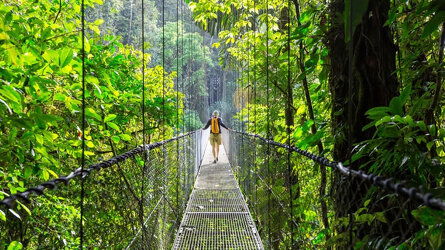
Launching in 1981, Explore offer trips from over 130 countries - from classic small group tours. Read more
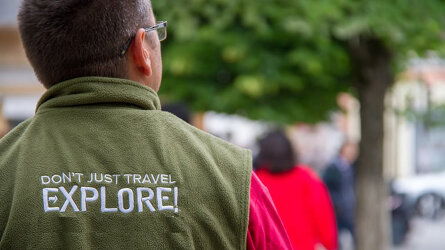
Explore's leaders are more than just your typical guide. They're your local expert are are passionate about sharing their expertise with you. Read more
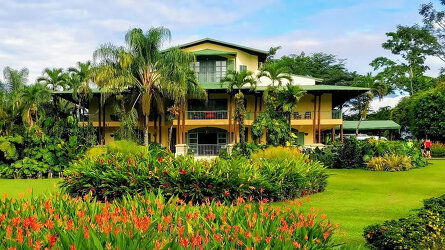
The places Explore stay are every bit as important as the sights they visit and the things you do. Read more

Launching in 1981, Explore offer trips from over 130 countries - from classic small group tours. Read more

Explore's leaders are more than just your typical guide. They're your local expert are are passionate about sharing their expertise with you. Read more

The places Explore stay are every bit as important as the sights they visit and the things you do. Read more

Brochure
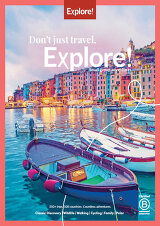
Explore Small Group Adventures (2025-26)
Brochure

Explore Small Group Adventures (2025-26)
Availability
 USD
USD
A definite departure means minimum numbers have been reached for this departure to operate. Your Global Journeys Travel Advisor will check the availability of your departure date when you enquire. Additional savings may apply. We guarantee the lowest price in USA. T&C’s apply.
Tour & cruises prices are per person. Prices shown have savings applied, are subject to availability and may be withdrawn at any time without notice. Pricing and trip details are correct at this point in time, however are subject to confirmation at the time of booking and are subject to change by Explore. For cruise itineraries, cabin images are sourced from Explore. These should be treated as indicative only. Cabin inclusions, upholsteries and room layout may differ to the image(s) shown depending on the ship selected and your sailing dates.
